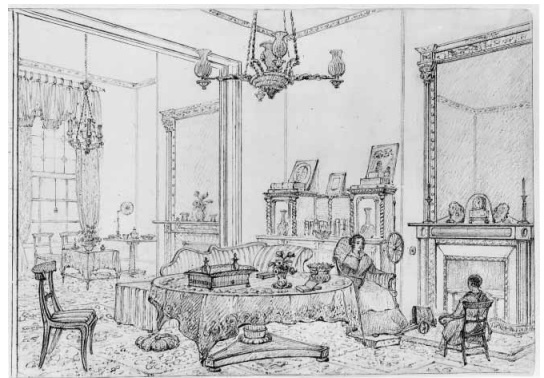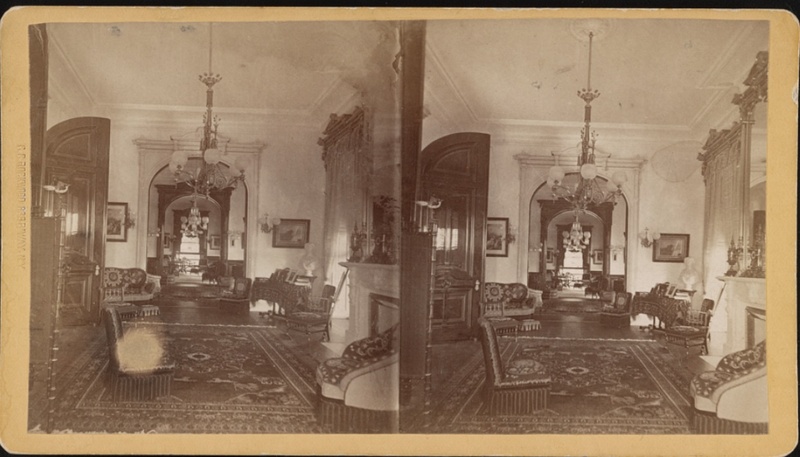Victorian Room, History
Deriving its name from the French word, parler—meaning to speak—this room gained its notoriety during the American Industrial Revolution. Advancements made in steel, coal, and transportation saw a boon to the economy, and with greater financial gains, American society saw a renewed desire to demonstrate that success: by building larger houses that could be used to showcase the family’s social standing, taste, and morals.
A lecturer at Rice University in English and Humanities, Thad Logan, explains the evolution of the “parlor”:
“Originally, the parlour was an apartment in a monastery or convent set aside for conversation, either with outsiders or with members of the order. Thus, from the earliest recorded use of the term in the thirteenth century the parlour was a space removed from daily work and reserved for social interaction.”
Decor in these spaces often spared no detail or expense, largely coming to be known under the title of Victorian excess. These rooms were filled with upholstered furniture, decorative wallpaper, musical instruments–often a piano or harmonium—and baubles that often signified the family’s travels or cultural sophistication.
This is supported by Mrs. James Ward Thorne's 1941 text, American Rooms in Miniature, where she writes:



